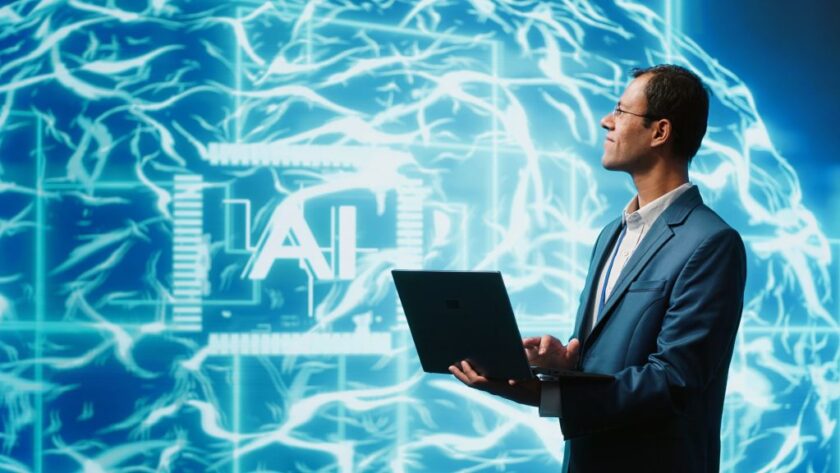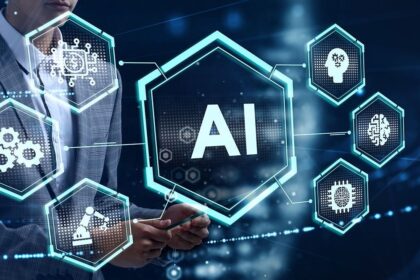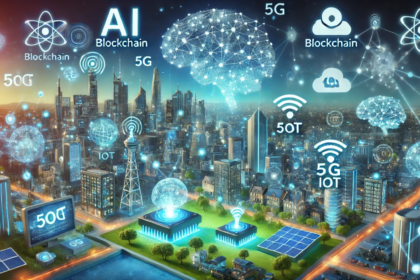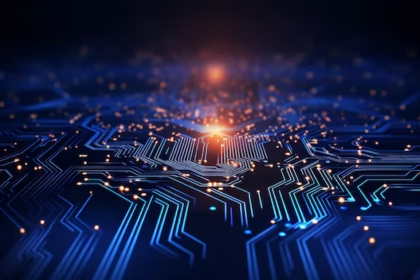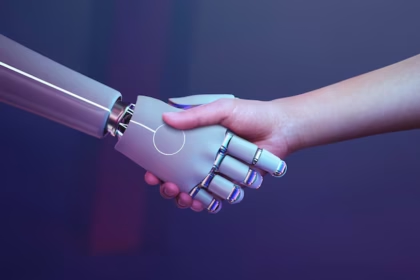As we approach 2025, several transformative technologies are reshaping industries, economies, and our daily lives. Among these, 5G, Artificial Intelligence (AI), and Blockchain stand out as the most promising and disruptive forces. Each of these technologies has the potential to drive significant changes across multiple sectors, from healthcare and finance to manufacturing and entertainment.
In this article, we explore how 5G, AI, and Blockchain are expected to evolve by 2025, their key applications, and the far-reaching implications they may have on our personal lives, businesses, and global economies.
1. 5G: Revolutionizing Connectivity and Enabling New Experiences
The fifth generation of wireless technology, known as 5G, promises to deliver faster, more reliable, and more efficient connectivity than ever before. While 5G networks are already being deployed worldwide, its full potential is expected to be realized by 2025, when the technology will be more widely adopted and optimized for various use cases. The high-speed data transfer and ultra-low latency of 5G are set to open up new possibilities in several industries.
1.1. Key Features of 5G
- Faster Speeds: 5G will provide data speeds up to 100 times faster than 4G, enabling seamless streaming, real-time communication, and more data-intensive applications.
- Low Latency: 5G’s near-zero latency (delays in data transfer) will facilitate instant communication between devices and systems, a critical feature for technologies such as autonomous vehicles and remote surgeries.
- Increased Connectivity: 5G will support millions of devices per square kilometer, making it ideal for the Internet of Things (IoT) and the expansion of smart cities and industries.
1.2. Applications and Impact in 2025
- Autonomous Vehicles: 5G will be a key enabler of autonomous driving. With its low latency, vehicles can communicate with each other, infrastructure, and traffic systems in real time, allowing for safer and more efficient navigation.
- Smart Cities: 5G will accelerate the growth of smart cities by enabling widespread IoT devices for monitoring traffic, energy usage, public safety, and environmental conditions. Cities will become more efficient, sustainable, and responsive to the needs of residents.
- Telemedicine and Remote Surgery: With 5G’s low latency and high-speed data transfer, telemedicine will advance significantly. Surgeons could perform remote surgeries with robotic instruments, with real-time feedback and minimal delay.
- Entertainment and Media: 5G will revolutionize the entertainment industry by enabling the streaming of high-definition and 3D content in real time. Virtual and augmented reality applications will thrive as 5G supports immersive experiences with minimal lag.
By 2025, 5G is expected to foster innovations that will make real-time communication, automation, and connectivity a reality on a global scale.
2. Artificial Intelligence (AI): From Automation to Advanced Decision-Making
Artificial Intelligence has been steadily advancing over the last decade, but by 2025, AI will be integrated deeply into our everyday lives and industries. AI systems will continue to improve in capabilities, making them indispensable tools for business automation, predictive analytics, and even creative endeavors.
2.1. Key Developments in AI by 2025
- Natural Language Processing (NLP): NLP capabilities in AI will continue to evolve, enabling even more advanced voice assistants, chatbots, and real-time language translation tools.
- Cognitive Computing: AI systems will be able to perform tasks that mimic human thinking, learning, and decision-making processes, improving decision-making accuracy across various sectors.
- Explainable AI (XAI): In 2025, there will be a strong emphasis on making AI decision-making more transparent and understandable. This is crucial in sectors like healthcare, finance, and law, where decisions need to be explainable and justifiable.
2.2. Applications and Impact in 2025
- Healthcare: AI will continue to transform healthcare by enabling personalized medicine, improving diagnostics, and assisting in drug discovery. By 2025, AI-powered platforms could help doctors in real-time with diagnosis and treatment recommendations, leading to more accurate and efficient patient care.
- Finance: AI’s role in financial services will deepen, from algorithmic trading to personalized financial advice. Machine learning algorithms will be able to predict market trends, detect fraud, and automate tasks, significantly reducing costs and risks in the financial industry.
- Workforce Automation: AI will automate a wide range of manual and repetitive tasks, from data entry to customer service. By 2025, businesses across industries will be increasingly dependent on AI-driven automation to enhance productivity and reduce costs.
- Creativity and Content Creation: AI will play a significant role in content creation by 2025. AI tools will generate written, audio, and visual content in ways that are indistinguishable from human-generated content, enabling businesses to scale their marketing efforts and produce more targeted content.
AI will be everywhere in 2025, impacting almost every industry, from automating processes to enhancing customer experiences and making critical decisions in real-time.
3. Blockchain: A New Era of Transparency, Security, and Decentralization
Blockchain technology, originally developed as the foundation for cryptocurrencies, has since expanded into a variety of applications. By 2025, blockchain will likely be a mainstream tool used in industries ranging from finance and healthcare to supply chain management and entertainment.
3.1. Key Developments in Blockchain by 2025
- Interoperability: By 2025, blockchain networks will be able to seamlessly communicate with one another, facilitating the transfer of data and assets across multiple platforms and ecosystems.
- Smart Contracts: These self-executing contracts, which automatically execute and enforce agreements without intermediaries, will be more widely adopted. They will streamline business processes and enhance the efficiency of various industries.
- Privacy-Preserving Technologies: Blockchain will continue to develop methods for protecting users’ privacy while maintaining the transparency and security of the system. Zero-knowledge proofs, for example, will be used to validate transactions without exposing sensitive data.
3.2. Applications and Impact in 2025
- Decentralized Finance (DeFi): Blockchain’s role in the DeFi space will grow rapidly by 2025, enabling decentralized lending, borrowing, trading, and insurance, without the need for traditional banks or financial intermediaries.
- Supply Chain Management: Blockchain will ensure greater transparency and traceability in supply chains. By 2025, businesses will be able to track every step of the production process, ensuring products’ authenticity, reducing fraud, and improving sustainability.
- Digital Identity: Blockchain will play a crucial role in creating secure and verifiable digital identities. This could eliminate the need for multiple usernames and passwords, providing a single, decentralized identity that can be used across platforms while maintaining privacy and security.
- Intellectual Property and Content Protection: In the entertainment and media industries, blockchain will be used to manage intellectual property rights and ensure fair compensation for creators. Smart contracts will automatically handle royalty payments and content licensing agreements.
By 2025, blockchain will be a foundational technology for ensuring transparency, security, and efficiency in various sectors, offering new ways to decentralize and democratize digital assets and information.
4. The Synergy Between 5G, AI, and Blockchain
While each of these technologies is transformative on its own, when combined, they create powerful synergies that can unlock even greater potential. For example:
- 5G and AI: The combination of 5G’s ultra-fast data speeds and AI’s processing power will enable real-time AI applications, such as autonomous vehicles, smart cities, and remote surgeries. AI will be able to process vast amounts of data instantly, driving innovation in industries that rely on real-time information.
- 5G and Blockchain: 5G will provide the infrastructure needed to support the massive scale of blockchain networks. The low latency and high-speed connectivity of 5G will allow blockchain transactions to be completed almost instantaneously, facilitating the growth of decentralized applications (dApps).
- AI and Blockchain: AI can enhance the capabilities of blockchain networks by improving the efficiency and scalability of blockchain-based systems. AI algorithms can help detect fraud, optimize blockchain networks, and automate processes such as contract execution.
Together, 5G, AI, and blockchain will power the next generation of innovations, making systems smarter, faster, and more secure. These technologies will be deeply integrated into industries, businesses, and consumer experiences by 2025, reshaping the way we live, work, and connect.
5. Challenges and Considerations for 2025
As with any technological revolution, the widespread adoption of 5G, AI, and blockchain will come with challenges. Some of the key considerations for the next few years include:
- Regulation: Governments will need to develop regulatory frameworks that address issues such as data privacy, cybersecurity, AI ethics, and blockchain governance.
- Security: While blockchain offers enhanced security features, vulnerabilities in AI systems and 5G networks could open up new avenues for cyberattacks. Securing these technologies will be a top priority.
- Job Displacement: Automation driven by AI and 5G may lead to significant job displacement in some industries. It will be essential to ensure that workers are reskilled and retrained to take advantage of new opportunities created by these technologies.
- Digital Divide: The global digital divide remains a significant issue. Access to 5G, AI-powered services, and blockchain applications may be limited in developing countries, exacerbating inequalities. Bridging this gap will be crucial to ensuring that the benefits of these technologies are accessible to everyone.
6. Conclusion: Embracing the Future of Technology
By 2025, 5G, AI, and blockchain will have reached maturity, driving transformative changes across every industry. The combined power of these technologies will enable unprecedented levels of automation, connectivity, security, and efficiency. However, to maximize their benefits, we must address challenges like regulation, security, and workforce adaptation.
As we move toward 2025, the world will increasingly be shaped by the intersection of these cutting-edge technologies. Embracing the opportunities they present while managing their risks will define the next wave of innovation in the digital era.

